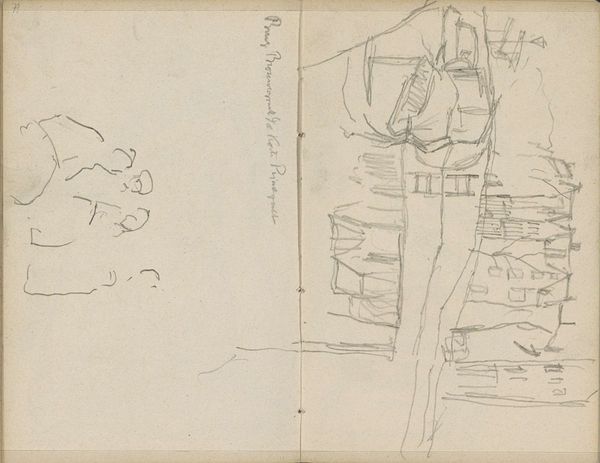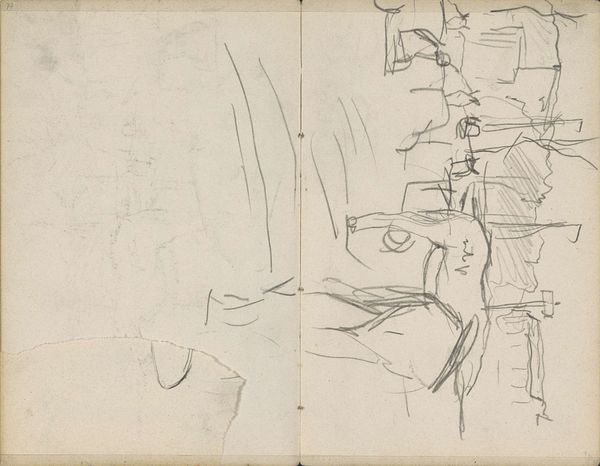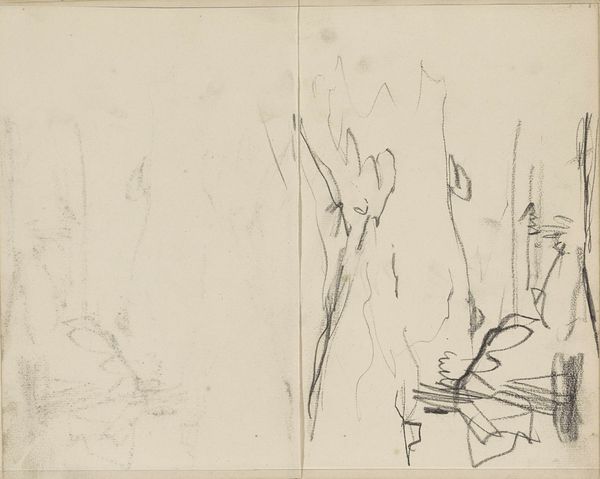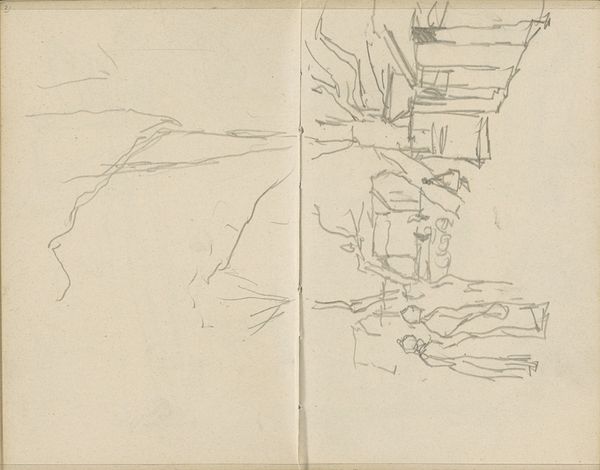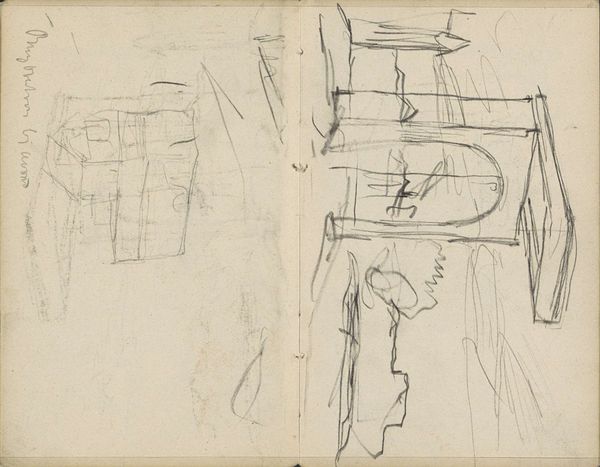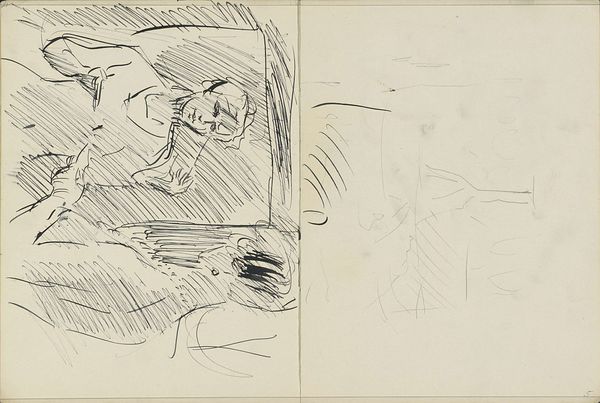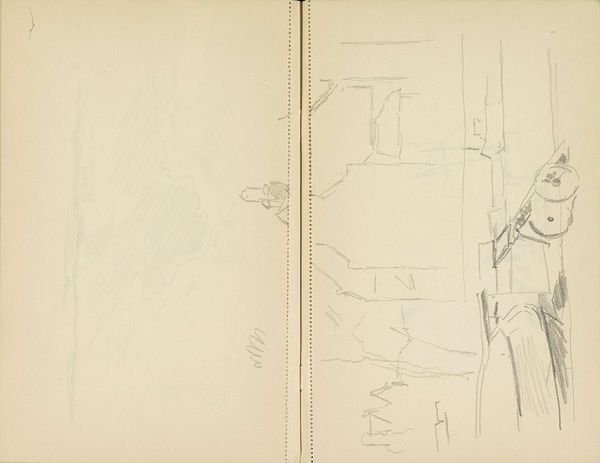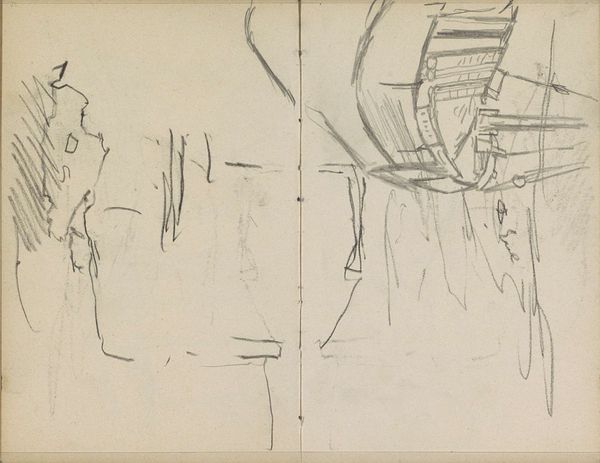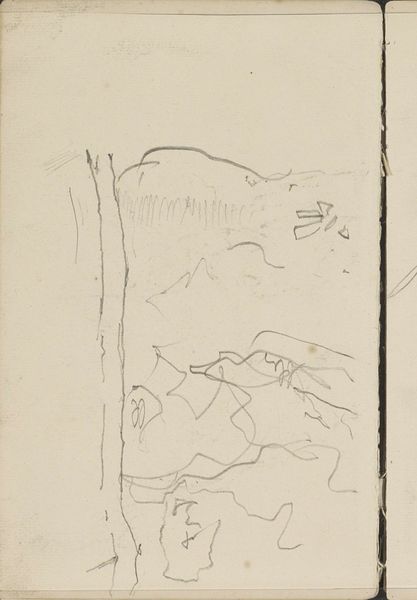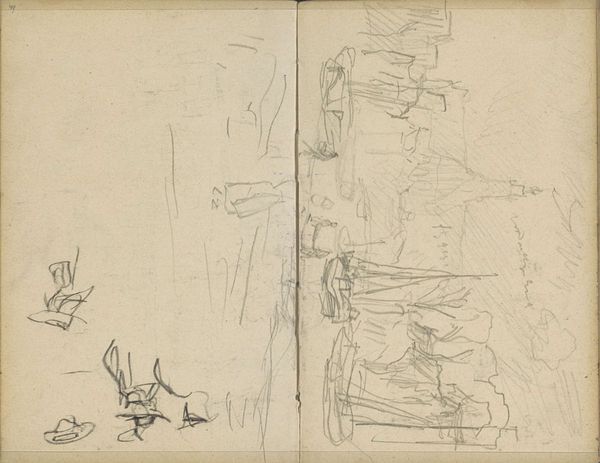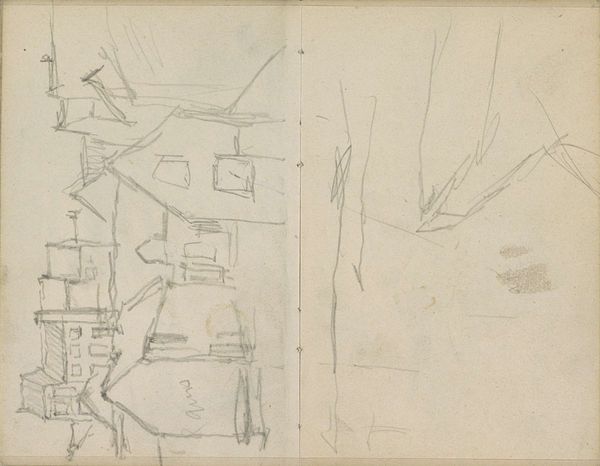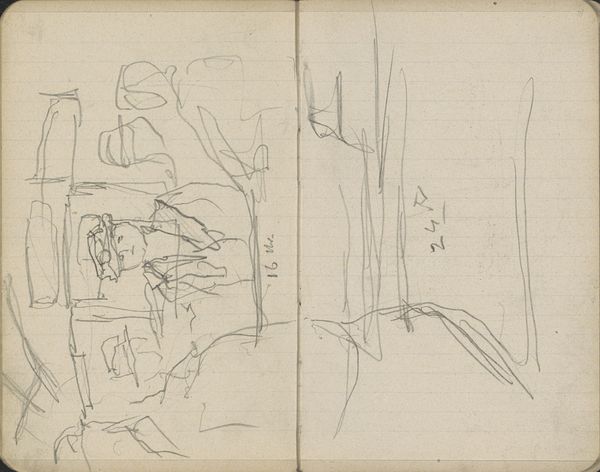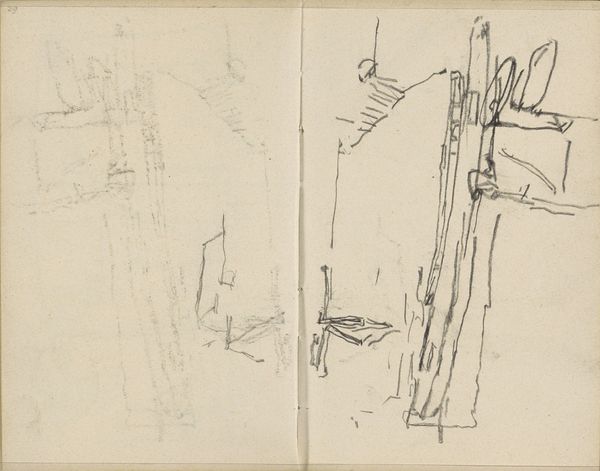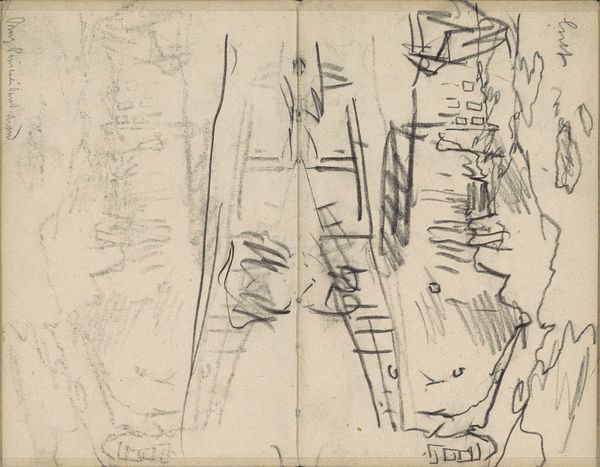
#
amateur sketch
#
light pencil work
#
pen sketch
#
personal sketchbook
#
idea generation sketch
#
ink drawing experimentation
#
pen-ink sketch
#
sketchbook drawing
#
sketchbook art
#
initial sketch
Copyright: Rijks Museum: Open Domain
Curator: Here we have George Hendrik Breitner's "Gezicht in Amsterdam, mogelijk het Rokin," a sketch believed to have been created sometime between 1886 and 1903. Editor: My immediate thought is "fleeting." It's all movement and light, a capturing of a moment more than a precise rendering. Curator: Indeed. Breitner was deeply engaged with the rapid transformations of Amsterdam at this time. These sketchbook pages offer us a glimpse into his process of documenting urban life and the impact of industrialization on the city’s social fabric. Notice how the unburdened quality speaks volumes about his intentions of observing more than rendering. Editor: The architectural forms on the right definitely suggest the Rokin, or perhaps a similar canal-side scene. What’s really grabbing me are the almost primal marks on the left page. It gives me this preverbal sensation as if Breitner wants to capture an essence beyond language itself. What do you think? Curator: Well, on a simplistic level, I see preliminary studies; they likely provided the bedrock to be used in his paintings or further developed drawings. In that sense, they evoke notions of authorship and labor. It seems quite important that Breitner chose, whether deliberately or not, to give the impression that labor is required to arrive at truth, and meaning. Editor: But is the truth achieved then if he intentionally creates ambiguity in order to provoke reflection? It has always struck me that artists employ images to convey feelings, states of mind, cultural tendencies, not simple mirror-image likeness. Curator: Perhaps the feeling *is* the truth in his artistic expression here, a perspective of rapid urban transition expressed through symbolic gestures of the cityscape. That said, he wasn’t afraid to confront class and gender inequalities in his later paintings, focusing often on working-class women within those urban environments, as a type of "urban exploration." This, though, shows only what the city gives at first glance: movement, geometry, light and shadow. Editor: Looking again, that mark-making feels especially resonant when understanding the Rokin's history as a place of commerce and transition. These gestures encapsulate Amsterdam’s transformation into a modern metropolis; an old, almost primal language, for an updated, changing societal core. Curator: Thank you. It seems even in a preliminary sketch like this one, Breitner reveals the intertwined relationships between social progress, memory, and urban development.
Comments
No comments
Be the first to comment and join the conversation on the ultimate creative platform.
